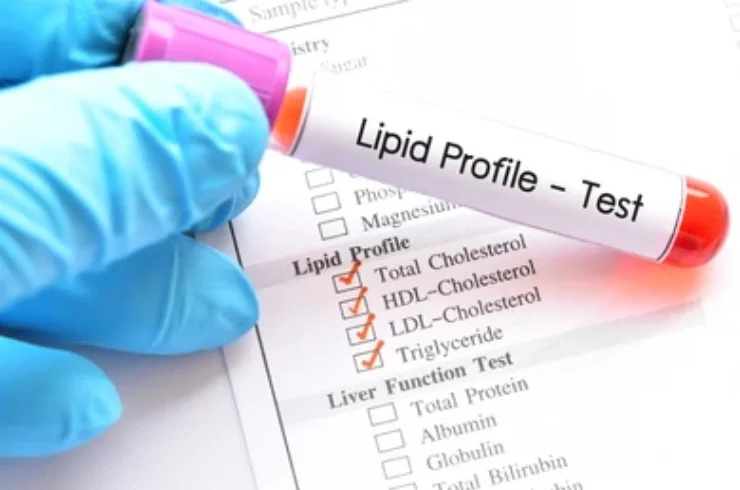Lipid Profile – Total Cholesterol, HDL, LDL, VLDL, Triglycerides
A Lipid Profile is a comprehensive blood test used to assess the levels of different types of fats (lipids) in the bloodstream. It plays a vital role in evaluating an individual’s risk for cardiovascular diseases, such as heart attack and stroke. The test typically includes five key parameters: Total Cholesterol, High-Density Lipoprotein (HDL), Low-Density Lipoprotein (LDL), Very Low-Density Lipoprotein (VLDL), and Triglycerides.
Total Cholesterol reflects the overall amount of cholesterol in the blood, including both good (HDL) and bad (LDL) cholesterol. HDL, often called “good cholesterol,” helps remove excess cholesterol from the arteries and transport it back to the liver. Higher HDL levels are considered protective against heart disease.
LDL, known as “bad cholesterol,” can accumulate in the walls of blood vessels, leading to atherosclerosis or narrowing of the arteries. Elevated LDL levels are a major risk factor for coronary artery disease. VLDL primarily carries triglycerides and also contributes to plaque buildup in arteries.
Triglycerides are another type of fat in the blood. High levels can increase the risk of heart disease, especially when accompanied by low HDL and high LDL.
Regular monitoring of lipid profile is crucial for individuals with a family history of heart disease, diabetes, obesity, or hypertension. The results help guide lifestyle changes and medical interventions aimed at reducing cardiovascular risk and promoting long-term heart health.



